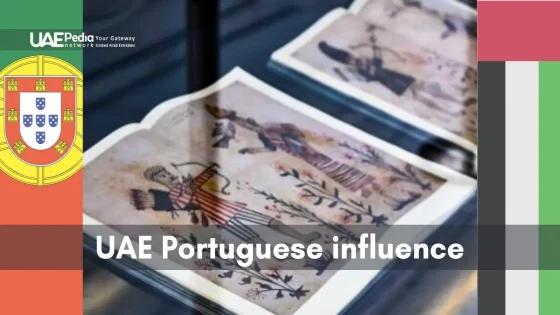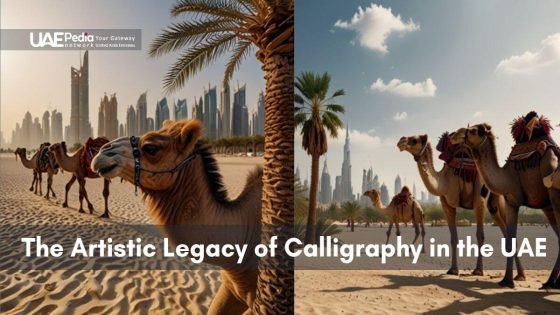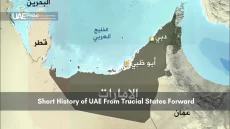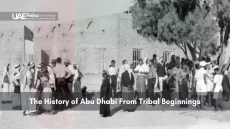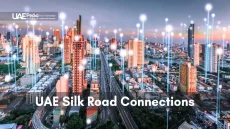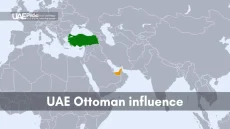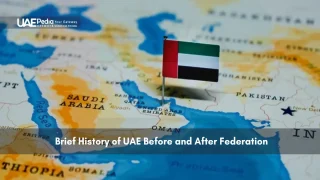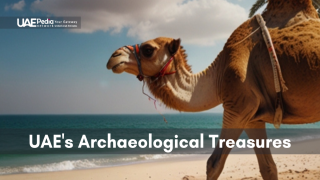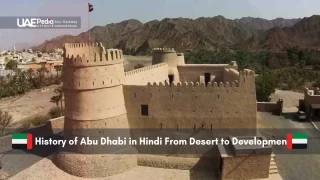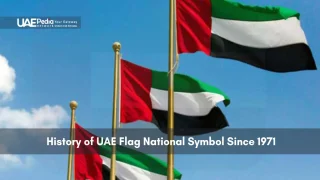What if we told you Dubai’s skyline was built on foundations older than pearls? Long before its futuristic towers, this desert gem thrived as a modest port where fishermen and pearl divers shaped its destiny. Let’s uncover how tides of change transformed a gulf outpost into a city that rewrites the rules of progress.
Arabic geographer Muhammad al-Idrisi first documented settlements here in the 10th century, but it was Venetian explorer Gasparo Balbi’s 16th-century accounts that revealed Dubai’s early heartbeat: a bustling hub where dhows carried pearls to distant markets. For centuries, the region relied on its coastal riches—until shrewd leaders recognized its potential as a trade crossroads.
The discovery of oil in the 1960s accelerated growth, but Dubai’s vision extended beyond black gold. Investments in ports, airports, and free zones turned the country into a bridge between East and West—a strategy mirrored in neighboring ancient forts that once guarded vital trade routes.
Today, this capital of innovation balances Bedouin heritage with AI-powered ambitions. Its story isn’t just about dates and dunes—it’s a masterclass in reinvention, where traditional gulf values meet tomorrow’s possibilities.
Key Threads in Dubai’s Tapestry:
- 10th-century roots revealed through Arab and European chroniclers
- Pearl diving economy that predates skyscrapers by 800 years
- Strategic location that turned trade into a modern superpower
- Oil wealth reinvested to diversify beyond finite resources
Origins and Early Inhabitance
Imagine crunching across sun-baked earth where mangrove roots once gripped brackish waters—7,000 years before air-conditioned malls. Archaeologists uncovered stone tools and fire pits in Dubai’s area, revealing one of the oldest known settlements on the Arabian Peninsula. These early dwellers didn’t just survive—they thrived, mastering date palm cultivation by 2500 BCE as the scent of roasted fish wafted through seasonal camps.
Ancient Settlements and Agricultural Beginnings
Three game-changing developments reshaped this desert coast:
| Period | Innovation | Impact |
|---|---|---|
| 7000 BCE | Mangrove swamp settlements | First permanent structures |
| 3000 BCE | Cattle herding networks | Nomadic trade expansion |
| 2500 BCE | Date palm domestication | Agricultural revolution |
Nomadic Lifestyles and Early Trade Routes
Bronze Age traders from the Magan civilization—today’s Oman—carried copper and ceramics along the Persian Gulf coastline. Picture camel caravans kicking up dust as they moved between freshwater springs, their loads destined for Mesopotamia’s bustling markets. This century-spanning exchange network turned Dubai into a pit stop for ambition.
Archaeological Discoveries and Natural Landmarks
Recent digs near Jumeirah Beach revealed 4th-century CE pottery shards—evidence of a thriving population that adapted to shifting shorelines. The coastline’s natural harbor, shaped by ancient geological shifts, became a magnet for merchants. Even then, this Dubai city precursor understood its role as a bridge between worlds.
Dubai’s Medieval and Pre-Oil Era
Picture pearl divers plunging into turquoise waters, their lungs burning as they gathered nature’s treasures centuries before luxury boutiques lined the coast. This era saw Dubai morph from a quiet fishing community into a maritime powerhouse—fueled by faith, pearls, and shrewd diplomacy.
Islamic Influence and the Rise of Pearl Diving
When Islam reached the Persian Gulf in the 7th century, it reshaped daily life. Mosques became community hubs, while ethical trade practices boosted trust among merchants. Pearling crews—often led by a naham (captain)—worked sunrise to sunset, their hauls shipped to Bombay and Paris. At its peak, the industry employed 80% of the local population.
| Period | Development | Impact |
|---|---|---|
| 7th Century | Introduction of Islam | Unified trade ethics |
| 18th Century | Pearling fleets expansion | Global pearl dominance |
| 1820 | Maritime truce treaties | Piracy reduction |
The Trucial States and Early Maritime Agreements
British envoys brokered peace along the coast, signing the 1820 General Maritime Treaty. This pact birthed the Trucial States—a coalition including Dubai and Abu Dhabi. Ports like Deira buzzed with dhows carrying spices, textiles, and gold. Sailors from India and East Africa mingled here, blending traditions that still flavor the city today.
These alliances transformed the region into a safe corridor for global trade. By 1900, Dubai’s port handled more cargo than any other in the country—a title it never relinquished.
Short History of Dubai: Transformation Through Rulers and Trade
In 1833, a desert coup changed everything. When the Al Maktoum clan seized control from the Al Abu Falasa tribe, they didn’t just shift power—they ignited a commercial revolution. This bold move laid the groundwork for what would become the United Arab Emirates’ most dynamic city.
Dynastic Chess in the Desert
The Al Maktoum rulers acted like startup founders. They:
- Signed the 1892 Exclusive Agreement with Britain, trading protection for trade freedom
- Established Dubai’s first municipal council in 1957—a proto-government structure
- Cut deals with Abu Dhabi to share water rights during droughts
These moves transformed the Trucial States from pirate coasts to trusted partners. You can still see their legacy in the Trucial States agreements that shaped regional diplomacy.
Merchant Kings and Global Connections
While oil gets credit, Dubai’s true wealth came earlier. Visionary rulers slashed taxes and invited Persian and Indian merchants to set up shop. By 1900, the city’s souks buzzed with:
- Iranian textiles traded for Omani dates
- British machinery exchanged for Gulf pearls
- East African gold flowing to Bombay banks
This re-export magic turned Dubai into Asia’s backdoor to Europe. Even Sheikh Zayed—architect of the UAE federation—later mirrored these strategies when uniting the Arab Emirates.
The Oil Boom and Modernization
When oil gushed from Dubai’s desert in 1966, it didn’t just fuel engines—it ignited a transformation. Sheikh Rashid bin Saeed, the architect of modern Dubai, channeled this wealth into visionary projects. His first masterstroke? Dredging Dubai Creek to welcome larger ships, reviving the port that once hosted pearl dhows into a gateway for global trade.
Discovery of Oil and Economic Resurgence
The black gold discovery reshaped the economy overnight. By 1969, Dubai exported its first crude barrel—but leaders knew finite resources demanded smarter strategies. Taxes vanished. Foreign investors received red-carpet treatment. The region’s pearling grit evolved into entrepreneurial hustle.
Infrastructure Developments and Free Zones
Jebel Ali Free Zone became the crown jewel—a tax-free haven attracting over 7,000 companies by 2000. Dubai Media City followed, turning sand into silicon. These zones offered more than space: 100% foreign ownership, zero tariffs, and streamlined regulations that mirrored the country’s strategic evolution.
Global Trade, Tourism, and Investment
While skyscrapers like the Burj Khalifa’s blueprint took shape, Dubai diversified like its ancestors once did—trading pearls for possibilities. Today, tourism brings 16 million visitors yearly. The Persian Gulf’s ancient trade routes now pulse with data cables and cargo planes, cementing the Emirates as a 21st-century crossroads.
From pearl beds to glass towers, Dubai’s blueprint proves one truth: wealth isn’t found—it’s built. And this building never stops.
Evolution into a Megacity
Where desert stars once outshone all else, steel-and-glass constellations now pierce the sky. Dubai’s metamorphosis from trading post to 21st-century marvel mirrors the ambition of the United Arab Emirates—a story told through gravity-defying buildings and neighborhoods where 200 nationalities collide like spices in a souk.
Iconic Skyscrapers and Landmark Constructions
The Burj Khalifa didn’t just break records—it rewrote physics. Engineers pumped ice-slush concrete at night to combat 122°F heat during its construction. Today, this world’s tallest tower anchors a skyline that grows wilder by the month. Down the coast, Palm Jumeirah’s artificial archipelago required enough sand to fill 2.5 Empire State Buildings.
New marvels keep coming. Dubai Creek Tower—planned to surpass the Burj—will cast shadows across the Persian Gulf. Meanwhile, the Museum of the Future near Sheikh Zayed Road blends Arabic calligraphy with AI exhibits, proving tradition and tech aren’t rivals here.
Cultural Diversity and Urban Growth
Step off the metro at Dubai International Financial Centre, and you’ll hear Hindi haggling over karak chai while French architects debate parametric designs. This city houses the world’s busiest port (Jebel Ali) and airport (Dubai International), funneling global talent into tax-free zones. Yet amid the glass, wind towers from old Abu Dhabi villages whisper of Bedouin ingenuity.
The government fuels this growth with bold bets. Solar-powered “Sustainable City” compounds sit minutes from Ski Dubai’s indoor slopes—a paradox only possible here. As cranes dance along the coast, one truth emerges: Dubai builds not just for today, but for a future it’s already imagining.
Looking Forward: Dubai’s Enduring Legacy
What if tomorrow’s Dubai makes today’s skyline look quaint? From pearl-diving roots to AI-driven smart cities, this United Arab Emirates powerhouse keeps rewriting its playbook. Its story—woven through centuries of maritime trade and bold rulers—proves reinvention isn’t a phase, but a tradition.
Visionaries like Sheikh Rashid turned oil wealth into global trade hubs and tax-free zones. Now, solar farms power desalination plants while Dubai International airport connects every continent. The government bets big on robotics and blockchain, yet honors pearl divers’ resilience in policies promoting risk-taking.
New free zones near Jebel Ali port lure tech startups, mirroring how Abu Dhabi once shared water rights. Even the Burj Khalifa’s shadow stretches toward projects like the Museum of the Future—where holograms explain Bedouin navigation techniques.
Dubai’s secret? Treating history as fuel, not an anchor. As cranes dot horizons and Persian Gulf tides lap artificial islands, one truth remains: this city thrives by building bridges—between eras, cultures, and tomorrow’s uncharted possibilities.
Pearl diving, fishing, and trade formed Dubai’s backbone for centuries. Merchants from India, Iran, and East Africa flocked to its creek-side souqs, exchanging textiles, spices, and gold. The 1894 tax exemption for foreign traders supercharged this crossroad role long before black gold arrived.
As part of the Trucial States (now UAE), Dubai signed maritime peace treaties with Britain in the 1820s, reducing piracy and securing trade routes. This laid groundwork for stability, allowing pearling profits to fund early infrastructure like Al Shindagha’s wind towers and Deira’s markets.
Opened in 1979, Jebel Ali became the world’s largest human-made harbor and a linchpin of Dubai’s diversification. Its free zone attracted global giants like IBM and Microsoft, cementing the city as a logistics titan. Today, it handles 30% of UAE trade—proof that vision outpaced oil reliance.
Sheikh Rashid bin Saeed Al Maktoum’s 1958-1990 reign sparked audacious projects: dredging the creek for bigger ships, building Port Rashid, and launching Emirates airline. His mantra—“My grandfather rode a camel, I drive a Mercedes, my son flies a jet”—fueled the can-do spirit birthing Burj Khalifa and Palm Islands.
Oil revenues (first exported in 1969) funded hospitals, schools, and roads, but leaders prioritized reinvestment over dependency. By luring multinationals with tax-free zones and visa reforms, Dubai evolved into a mashup of 200+ nationalities—where traditional abra boats glide past Robusta coffee hubs in Alserkal Avenue.

